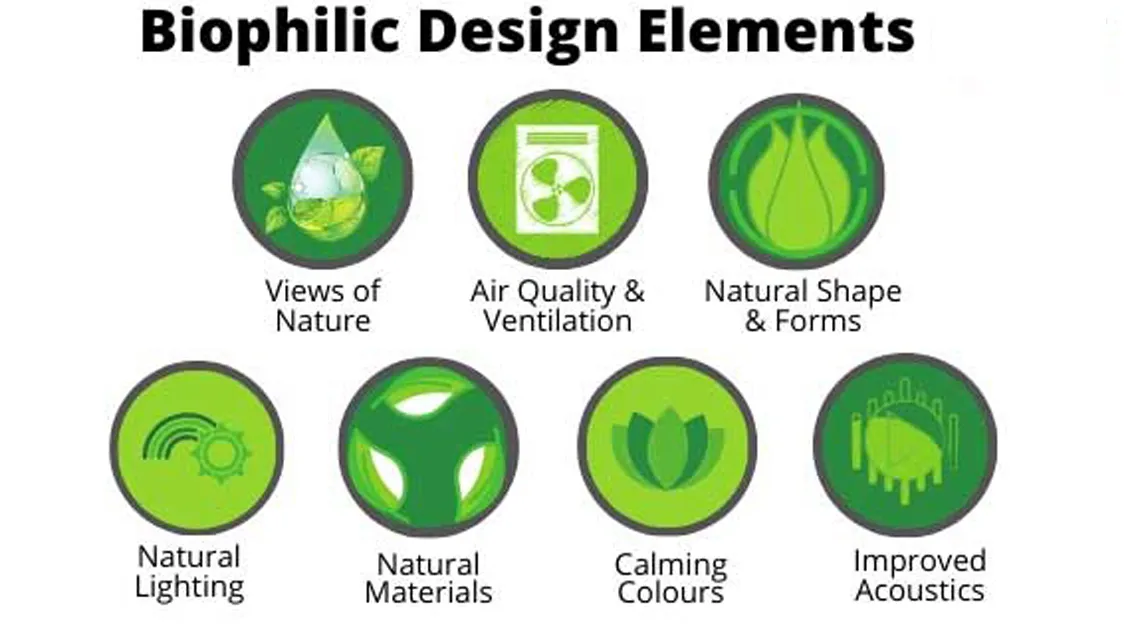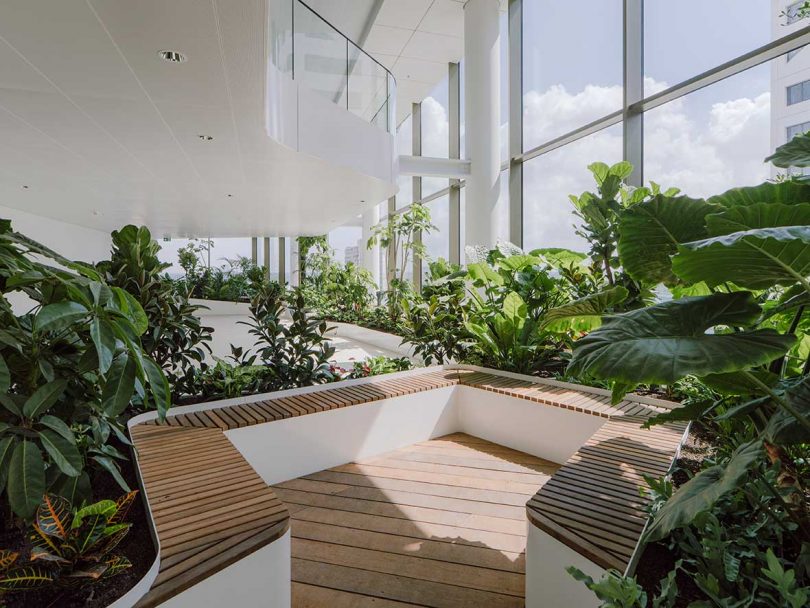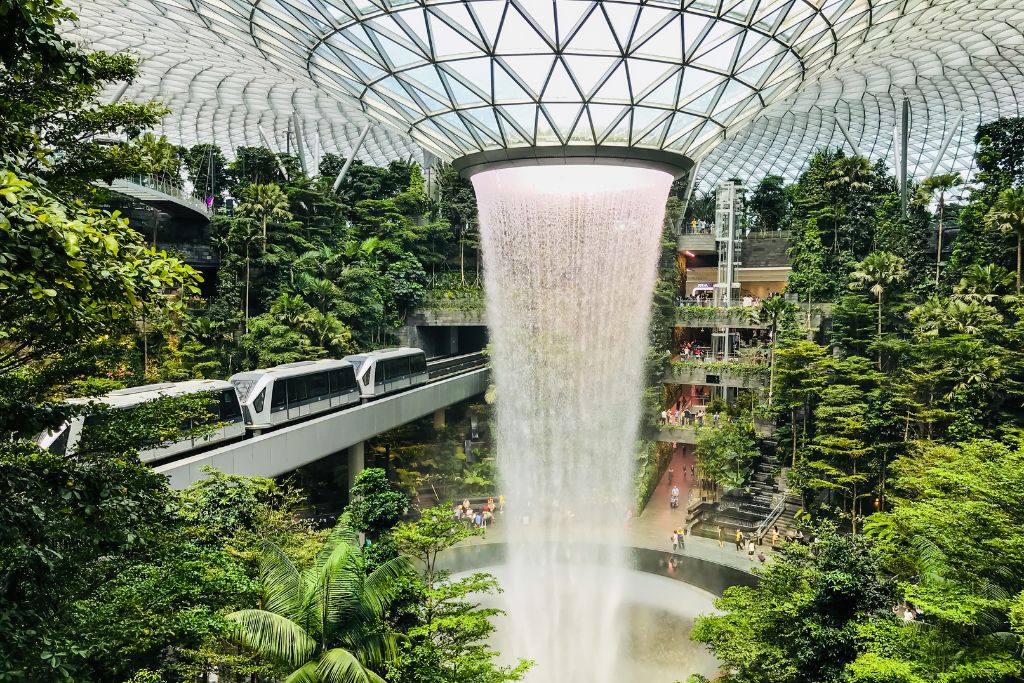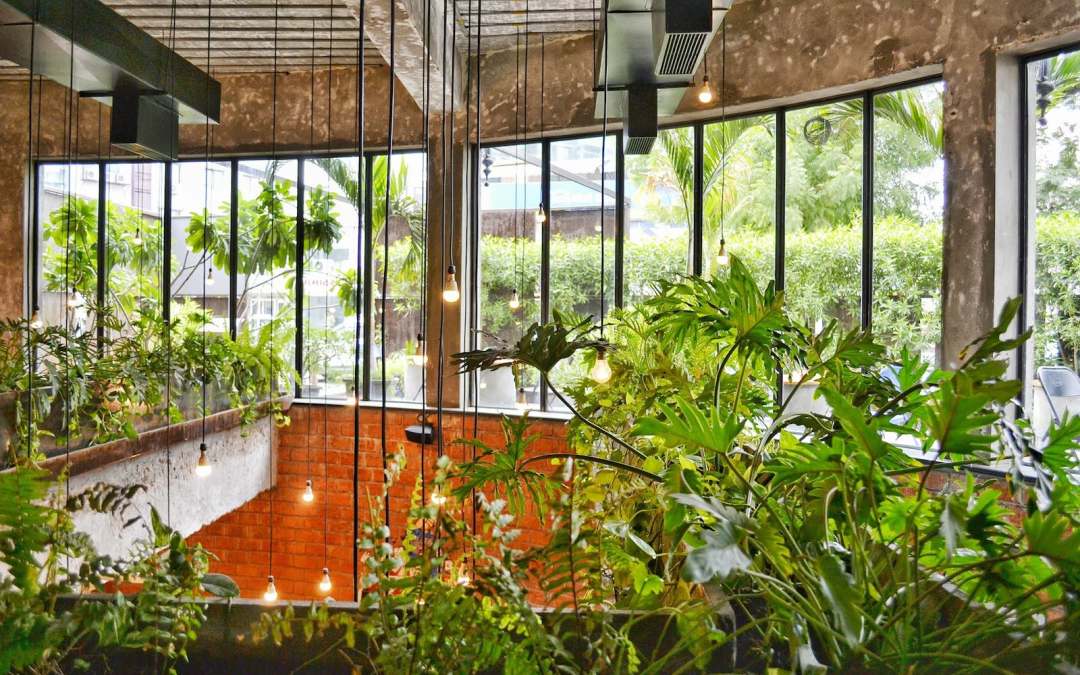Improving Air Quality Through Biophilic Design Elements.
In an era where urban living frequently detaches individuals from nature, biophilic design and nature-inspired design present a compelling solution to reintroduce outdoor elements into our everyday environments.
This design approach not only enhances the aesthetic appeal of various spaces but is also essential for improving air quality, which is critical for overall health and well-being. By incorporating natural ventilation, indoor plants, sustainable materials, and natural light, biophilic design provides an array of strategies to foster healthier living and working environments while promoting ecological benefits and sustainability.
By examining the benefits associated with improved air quality—including enhanced physical health, wellness, and increased productivity—we will explore how these design elements can be effectively integrated into homes, workplaces, schools, and healthcare facilities.
This discussion aims to highlight the transformative impact of biophilic design on both well-being and the environment, emphasizing the role of nature-based solutions and ecological design.
What is Biophilic Design?
.jpg_00.jpeg)
Biophilic design represents a progressive approach to architecture that aims to strengthen the relationship between humans and nature by integrating natural elements into built environments, thus fostering human-nature interaction and enhancing psychological well-being. This design philosophy underscores the importance of incorporating nature to enhance emotional and psychological well-being, as well as to promote environmental sustainability and climate resilience.
By employing principles of environmental psychology, biophilic design seeks to create restorative environments that meaningfully improve the quality of life for occupants while preserving aesthetic appeal and fostering a visual connection to nature. The integration of biophilic elements not only enhances the quality of spaces but also aligns with broader ecological design objectives, fostering harmonious connections between individuals and the natural environment, and promoting biodiversity.
Why is Air Quality Important in Biophilic Design?
Air quality is a fundamental element of biophilic design, significantly influencing the health benefits and overall well-being of occupants within a space, and playing a critical role in indoor air quality. High-quality air is essential for cultivating a productive and healthy environment, as it impacts cognitive function, mood, and physical health, and contributes to the overall health-oriented design principles.
In terms of environmental sustainability, enhancing air quality through design strategies can lead to considerable reductions in CO2 emissions while simultaneously improving the aesthetic appeal of both living and working environments, and promoting ecological awareness.
By prioritizing air purification methods and effective ventilation systems, biophilic design fosters a comprehensive approach to creating healthier spaces that connect individuals to their natural surroundings, and promote environmental literacy.
How Can Biophilic Design Improve Air Quality?
Biophilic design can significantly enhance air quality through various strategic methods that incorporate natural elements and sustainable practices, including the integration of air purification and passive design.
By promoting natural ventilation, integrating indoor plants, and utilizing sustainable materials, biophilic design creates healthier indoor environments that improve air purification, humidity control, and overall indoor air quality.
Additionally, the use of natural light not only decreases dependence on artificial lighting but also contributes to overall improvements in air quality by reducing pollutants associated with conventional energy sources, and enhancing daylighting benefits.
This comprehensive approach not only addresses air quality issues but also enhances the sensory experience and aesthetic value of spaces, fostering immersive environments.
1. Incorporating Natural Ventilation
Incorporating natural ventilation into biophilic design represents a fundamental strategy for enhancing air circulation, passive solar design, and energy efficiency while promoting health-conscious design principles. By allowing fresh outdoor air to circulate within indoor spaces, natural ventilation reduces reliance on mechanical systems, thereby decreasing energy consumption and improving indoor air quality, and thermal comfort.
This approach not only contributes to the reduction of CO2 levels but also fosters a more comfortable and pleasant environment for occupants, aligning with the core principles of sustainable architecture and green building.
Key design techniques, including strategically placed windows, air ducts, and thermal chimneys, facilitate the efficient flow of air, optimizing both cross-ventilation, air exchange, and stack ventilation effects. These methods not only aid in moderating indoor temperatures but also enhance the overall aesthetic appeal of spaces, thereby fostering a connection with nature and creating healthy spaces.
Successful implementations can be observed in developments such as the Bosco Verticale in Milan, where lush greenery and living walls are integrated with advanced ventilation strategies, promoting both biodiversity and occupant well-being.
However, challenges such as climatic variability, noise reduction, and urban noise must be carefully addressed to ensure that the benefits of natural ventilation surpass its drawbacks. This makes meticulous planning essential to maximize the effectiveness of natural ventilation in contemporary buildings.
2. Using Indoor Plants
The incorporation of indoor plants in biophilic design represents an effective approach to air purification, significantly enhancing both the aesthetic appeal and ecological integrity of a space, and contributing to the sensory experiences. Indoor plants are known to improve air quality by absorbing pollutants, air pollutants, and carbon dioxide while fostering a connection to nature that can positively influence occupant well-being and psychological well-being.
The strategic placement of these plants within interior environments can establish a biophilic atmosphere that promotes emotional well-being, cognitive function, and stress reduction, thereby underscoring the importance of integrating natural elements into design.
Several indoor plants, including the Peace Lily, Snake Plant, and Spider Plant, are particularly esteemed for their air-purifying properties and their role in air purification. Research conducted by NASA has demonstrated that these plants can substantially reduce common volatile organic compounds (VOCs) prevalent in homes and offices, thereby contributing to improved respiratory health and public health.
Furthermore, studies have indicated that interaction with greenery can mitigate stress levels and enhance concentration, with evidence suggesting a notable 15% increase in productivity associated with the presence of foliage in workplace environments and nature in the workplace.
This integration of aesthetic appeal and functional benefits highlights how ecological design and sustainable landscaping can enrich sensory experiences and promote a healthier indoor lifestyle.
3. Implementing Sustainable Materials
The implementation of sustainable materials in biophilic design is crucial for mitigating environmental impact while promoting health-oriented design principles and ecological footprint. By selecting natural resources and sustainably sourced materials, designers can reduce ecological degradation and contribute to a balanced ecosystem and sustainable design.
This approach not only elevates the aesthetic experience of a space but also ensures that indoor environments foster the well-being of their occupants through healthier material choices, reduced emissions, and sustainable architecture.
Common sustainable materials, such as reclaimed wood, bamboo, and recycled metals, offer strong structural integrity while minimizing the carbon footprint associated with their production, and promoting adaptive reuse. These materials not only help to reduce waste but also often present unique textures and colors that create a warm and inviting atmosphere, contributing to the nature-inspired materials.
The integration of such elements fosters a connection between individuals and nature, thereby enhancing psychological well-being, and creating nature connectivity.
Furthermore, the use of non-toxic finishes and low-VOC substances provides direct benefits to occupant health, resulting in environments that are both visually appealing and safe for prolonged use, ultimately enhancing the overall quality of life and promoting wellness architecture.
4. Utilizing Natural Light
.jpg_01.jpeg)
The utilization of natural light in biophilic design is a crucial strategy for enhancing light quality, reducing energy consumption, and improving overall well-being, and visual connection to nature. By designing spaces that maximize exposure to daylight, occupants can benefit from a more pleasant and uplifting environment, which research has demonstrated can improve mood, cognitive function, and productivity enhancement.
This light-driven approach not only fosters a connection to the natural environment but also aligns with the principles of environmental sustainability, daylighting, and energy efficiency.
Research indicates that natural light can significantly reduce stress levels and enhance focus, thereby contributing to healthier workplace dynamics and employee well-being. To effectively harness these benefits, architects and designers can implement various strategies, such as incorporating large windows, skylights, and light tubes, ensuring that workspaces are oriented to capture optimal sunlight throughout the day and enhancing nature exposure.
The use of reflective surfaces can further aid in the even distribution of natural light, decreasing reliance on artificial lighting and resulting in reduced energy costs, and promoting passive design. By placing a priority on natural light during the design phase, buildings can enhance employee well-being while promoting a more sustainable future, and fostering human-centered design.
What Are the Benefits of Improving Air Quality Through Biophilic Design?
Enhancing air quality through biophilic design offers numerous advantages that substantially improve both physical health and mental well-being, and contribute to climate adaptation and resilience.
Research indicates that superior air quality is associated with a decreased prevalence of respiratory issues, enhanced cognitive function, and increased overall comfort within indoor environments, and improved public health.
Furthermore, improved air quality has been correlated with heightened productivity and creativity, underscoring its importance in workspaces that emphasize employee well-being and productivity.
By prioritizing air quality, biophilic design plays a significant role in fostering a healthier and more sustainable living and working environment, and promoting sustainable architecture.
1. Improved Physical Health and Well-Being
Enhanced air quality, achieved through the principles of biophilic design, yields significant benefits for physical health and wellness. By implementing strategies such as natural ventilation and the incorporation of indoor plants and green walls, environments can effectively diminish airborne pollutants and allergens. This reduction can lead to a decrease in respiratory issues and other health-related concerns, underscoring the health benefits of air purification and improved ventilation.
Creating healthier indoor environments contributes substantially to overall wellness, fostering restorative environments that encourage active lifestyles and positive health outcomes for occupants through ecological design and sustainable architecture principles.
Research substantiates this conclusion, with studies demonstrating that improved air quality can result in a 20% reduction in asthma attacks and other respiratory conditions, thereby offering crucial preventive health strategies. Furthermore, findings from environmental psychology indicate that environments enriched with greenery can enhance cognitive function, leading to a 15% increase in productivity among individuals engaged in work or study within these settings.
These statistics highlight the importance of prioritizing indoor air quality and environmental sustainability as critical components in promoting wellbeing and fostering a healthier community, with a focus on sustainable design and climate resilience.
2. Enhanced Mental Well-being
Enhanced mental well-being represents a significant advantage of improving air quality through biophilic design, primarily due to the integration of nature exposure and sensory experiences within various spaces. Research demonstrates that a connection to nature can lead to reduced stress levels, improved mood, and increased overall emotional well-being, highlighting the psychological well-being benefits of such design strategies.
By prioritizing natural light, indoor greenery, and natural materials in design, biophilic principles effectively cultivate a nurturing atmosphere that supports mental health and yields psychological benefits. Incorporating elements like visual connection to nature and nature-inspired materials enhances these benefits further.
Numerous studies underscore these correlations, illustrating how environments enriched with plants and natural elements can lower cortisol levels, thereby alleviating anxiety and promoting a sense of calm. These findings also emphasize the role of nature therapy in enhancing mental well-being.
For example, a study conducted by the University of Queensland revealed that individuals working in green office environments reported higher job satisfaction and reduced mental fatigue. Similarly, hospitals that offer views of nature have recorded shorter recovery times for patients, further highlighting the significant impact of natural elements and the inclusion of urban greenery and landscape architecture.
By intentionally incorporating biophilic design, it is possible to enhance air quality while transforming spaces into sanctuaries for mental rejuvenation, ultimately fostering healthier and happier communities through human-centered design and nature connectivity.
3. Increased Productivity
Increased productivity is a significant benefit derived from improved air quality through biophilic design, as research indicates a strong correlation between environmental quality and cognitive function. Workspaces that incorporate biophilic elements, such as natural ventilation, green walls, and indoor plants, have demonstrated a capacity to enhance employee focus, creativity, and overall performance, contributing to productivity enhancement and employee well-being.
By integrating design principles that prioritize air quality, natural elements, and nature in the workplace, organizations can cultivate environments that not only support workplace wellbeing but also contribute to heightened levels of productivity and nature-inspired design.
Studies have shown that employees operating in environments characterized by superior air quality, particularly those featuring green walls, living walls, and abundant daylight, experience a reported 15% increase in productivity. Case studies from organizations that have adopted such designs reveal substantial improvements in employee health and job satisfaction, which in turn leads to reduced absenteeism and turnover rates, highlighting the benefits of sustainable materials and ecological awareness.
Furthermore, optimizing air quality through effective ventilation and air flow has been linked to enhanced cognitive function, enabling employees to execute complex tasks with greater efficacy. The positive implications of intentionally designed workspaces extend beyond mere productivity metrics; they represent a holistic approach to employee welfare and a robust commitment to fostering a thriving workplace culture through sustainable landscaping and ecological benefits.
4. Sustainable Living
Sustainable living is fundamentally connected to the enhancements in air quality that arise from biophilic design practices, which promote a lifestyle centered on environmental sustainability and climate adaptation. By incorporating elements such as green spaces, natural ventilation, and sustainable materials, biophilic design facilitates ecological balance and the prudent use of resources, contributing to biodiversity and ecosystem services.
This methodology not only improves the quality of life for individuals but also aligns with broader objectives of sustainability in urban planning and community engagement, fostering urban biodiversity and climate resilience.
The integration of features such as living walls, rooftop gardens, and green roofs can considerably mitigate urban heat islands, thereby enhancing overall air quality and providing habitats for local wildlife. Practices like rainwater harvesting and composting encourage resource conservation while fostering community involvement in sustainable initiatives, promoting environmental literacy and ecological footprint reduction.
These environmentally friendly designs not only enhance the aesthetic appeal of spaces but also cultivate a sense of belonging among residents, motivating them to participate actively in the stewardship of their environment through community gardens and nature integration.
The cumulative impact of such practices can lead to healthier neighborhoods, reduced energy costs, and the stimulation of local economies through the creation of green job opportunities, collectively contributing to a more resilient future through sustainable design and passive solar design.
How Can Biophilic Design Elements Be Incorporated in Different Settings?
.jpg_10.jpeg)
Biophilic design elements can be effectively integrated into a variety of environments, including residential spaces, workplaces, educational institutions, and healthcare facilities. Each setting can leverage distinct design strategies that enhance air quality, ecological design, and overall well-being through human-nature interaction and health-oriented architecture.
In residential environments, the incorporation of indoor plants and maximization of natural light contribute to creating soothing atmospheres that promote relaxation and restore thermal comfort through passive design principles and nature accessibility.
Workplaces can adopt biophilic elements to enhance productivity and employee satisfaction by improving indoor air quality and noise reduction, while educational institutions benefit from environments designed to improve focus and facilitate learning through immersive environments and nature connectivity.
Similarly, healthcare facilities that emphasize biophilic design can have a positive impact on patient recovery and overall health outcomes by using nature as art and incorporating nature motifs, thereby enhancing public health and psychological well-being.
1. Residential Spaces
Incorporating biophilic design into residential spaces involves the strategic use of indoor plants and the maximization of natural light to create environments that prioritize comfort and well-being. By introducing greenery and ensuring sufficient daylight exposure, homeowners can cultivate a sense of connection to nature, thereby enhancing both the aesthetic appeal and emotional comfort of their living spaces.
These elements are essential in creating restorative environments that promote relaxation and facilitate social interactions.
To effectively implement biophilic design, it is advisable to integrate features such as large windows that frame outdoor views, thereby allowing for direct engagement with natural surroundings. Utilizing materials such as wood and stone not only adds warmth and texture but also reinforces a connection to the outdoors.
Homeowners may consider layouts that accommodate indoor gardens or vertical plant walls, which can enhance air quality while providing visually pleasing elements.
For instance, a living room equipped with a large, south-facing window can be complemented by strategically placed houseplants, creating a serene and inviting atmosphere that further promotes a tranquil lifestyle in harmony with nature.
2. Workplaces
The implementation of biophilic design elements in workplaces can significantly enhance productivity and employee satisfaction by creating environments that prioritize air quality and natural aesthetics. Features such as indoor greenery, natural light, and ergonomic design contribute to a healthier workplace that promotes collaboration and innovation.
By emphasizing employee wellbeing and comfort, organizations can foster a more engaged and productive workforce.
This can be achieved through the incorporation of features such as living walls, which not only improve air quality but also enhance the visual appeal of the space, as well as large windows that allow for ample natural light, thereby reducing reliance on artificial lighting.
Utilizing natural materials in furniture and decor can cultivate a more calming atmosphere. Such strategies not only support mental health but also improve cognitive function, resulting in enhanced decision-making and problem-solving capabilities.
Ultimately, a commitment to biophilic design reflects an organization’s dedication to creating a supportive environment where creativity flourishes and employees feel valued.
3. Educational Institutions
Biophilic design has the potential to significantly enhance the learning environment within educational institutions by promoting focus and cognitive function among students through the integration of natural elements. By incorporating features such as natural light, outdoor learning spaces, and indoor plants, schools and universities can create restorative environments that stimulate engagement and facilitate learning.
These biophilic elements not only improve air quality but also encourage a deeper connection to the natural world, fostering curiosity and exploration.
As educational institutions aspire to create spaces that are both functional and inspiring, the integration of elements such as living walls, water features, and nature-inspired materials can substantially enhance the overall atmosphere.
For example, a university may transform an underutilized courtyard into an outdoor classroom enriched with diverse plant life and community gardens, providing students with an opportunity to conduct experiments in a more vibrant and stimulating setting. This approach leverages sustainable landscaping and educational spaces to enhance learning experiences.
Research indicates that exposure to nature can reduce stress, improve attention spans, and contribute to stress reduction, thereby enhancing cognitive function. By incorporating biophilic design and nature-inspired design into classrooms and corridors, educators can cultivate environments that not only enhance learning outcomes but also support the mental well-being and psychological well-being of students in meaningful ways.
4. Healthcare Facilities: Integrating Ecological Design for Better Health
Integrating biophilic design into healthcare facilities can significantly enhance patient recovery and overall well-being by creating calming and restorative environments. Elements such as natural light, views of nature, indoor plants, and green walls have been demonstrated to reduce stress and promote healing. By prioritizing air quality, air flow, and incorporating these biophilic design principles, healthcare settings can positively impact both patient experiences and health outcomes, promoting wellness and psychological well-being.
The utilization of natural materials, textures, and nature-inspired materials can evoke feelings of comfort and safety, which are essential in a healthcare environment. Research indicates that patients exposed to biophilic elements tend to experience shorter hospital stays, a decreased need for pain medication, and other health benefits.
Furthermore, the benefits of biophilic design extend to healthcare staff as well. Professionals working in environments that prioritize natural elements often report increased job satisfaction, enhanced productivity, and a reduction in burnout, contributing to a more effective healing atmosphere.
In summary, biophilic design not only supports the physical health of patients but also contributes to the emotional and psychological well-being of healthcare professionals, fostering a more harmonious and effective healing atmosphere. This nature-based approach to healthcare environments highlights the importance of human-nature interaction in promoting overall health and well-being.
Frequently Asked Questions
What is biophilic design and how does it improve indoor air quality?
.jpg_11.jpeg)
Biophilic design is an approach to architecture and interior design that incorporates elements of nature into built environments. By incorporating natural elements such as plants, natural lighting, and proper ventilation, biophilic design can improve air quality by increasing oxygen levels and reducing harmful air pollutants. This approach also enhances indoor air quality and supports the concept of healthy spaces.
What are some specific biophilic design elements that can help improve indoor air quality?
Some specific biophilic design elements that can help improve indoor air quality include green walls or living walls, living plants, natural ventilation systems, and the use of natural materials such as wood and stone. These elements not only contribute to air purification but also enhance the aesthetic appeal of indoor spaces.
Can biophilic design improve indoor air quality in indoor spaces?
Yes, biophilic design can improve indoor air quality in indoor spaces by reducing levels of carbon dioxide and pollutants, as well as increasing oxygen levels through the incorporation of plants, natural ventilation systems, and air quality monitoring to ensure optimal air purification and air exchange.
What are the benefits of incorporating biophilic design and sustainable architecture in buildings?
Along with improving air quality, incorporating biophilic design in buildings can also have other benefits such as increasing productivity, reducing stress levels, promoting overall health and well-being for occupants, and enhancing the human-centered design of these spaces. The integration of sustainable architecture principles further supports energy efficiency and environmental sustainability.
How does biophilic design and ecological design impact the environment?
Biophilic design can have a positive impact on the environment by reducing energy consumption through the use of natural lighting, ventilation, and passive solar design, as well as promoting sustainable design practices and the use of renewable materials. These efforts contribute to climate resilience and the ecological benefits of built environments.
Are there any studies or research that support the effectiveness of biophilic design and its air quality benefits?
Yes, there have been several studies and research that have shown the positive effects of biophilic design on air quality. One study found that incorporating plants, natural ventilation, and green infrastructure in an office space reduced levels of carbon dioxide and pollutants, leading to improved air quality, air purification, and increased productivity among employees. These findings highlight the importance of incorporating ecological awareness and nature connectivity in workplace design.

I’m Bruno, an architect with a deep passion for Biophilic Design in Urban Architecture. Throughout my career, I’ve focused on integrating natural elements into urban planning, and I created this site to share my insights and foster a deeper understanding of how biophilic principles can significantly enhance urban living. Dedicated to sustainable development, I continually explore innovative design solutions that promote both environmental and human well-being in city landscapes.














Publicar comentário